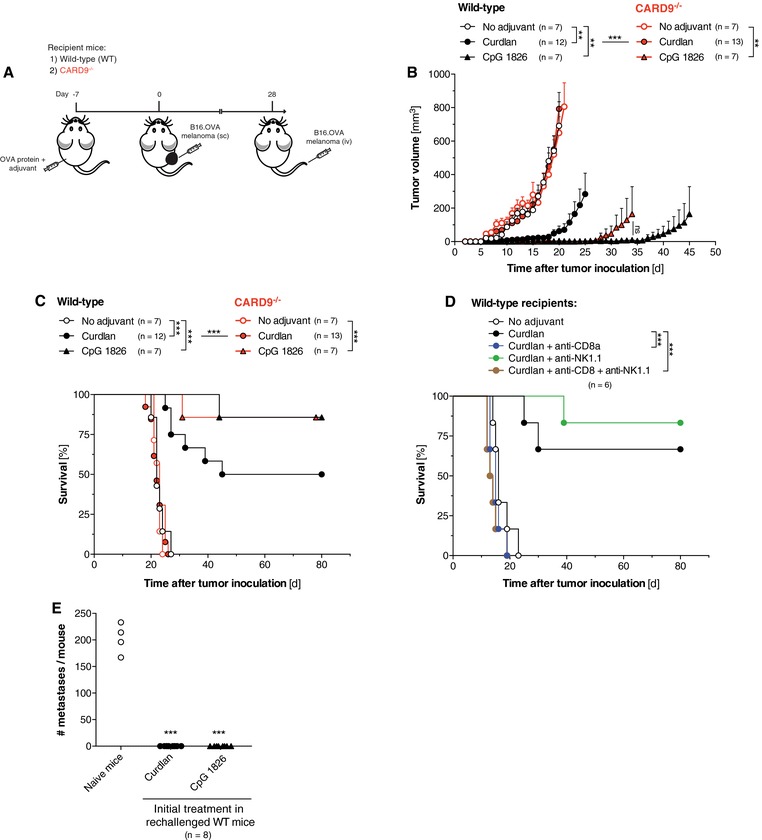Figure 3.

Curdlan‐based vaccination results in potent Card9‐dependent antitumor immunity. (A) Treatment scheme: WT and Card9−/− mice were vaccinated s.c. with OVA in combination with either Curdlan or CpG. One week later, B16.OVA melanoma cells were injected into the contralateral flank. (B) Tumor growth of WT and Card9−/− recipient mice was monitored daily. Data show mean tumor growth ± SEM from n = 7–13 individual mice. Mean tumor growth analysis was discontinued when the first animal per group succumbed to tumor progression. Complete tumor growth curves of each individual mouse are shown in the Supporting Information Fig. 2A. Statistical significance was calculated using one‐way ANOVA with Bonferroni posttests (* p < 0.05, ** p < 0.01, *** p < 0.001) based on the tumor volume at day 20, if not stated otherwise. (C) Survival of tumor‐bearing WT and Card9−/− mice. Survival was analyzed using the log‐rank test (*** p < 0.001). (D) WT mice were treated as described above. Some mice (n = 6) were additionally injected with anti‐CD8α‐ and/or anti‐NK1.1‐depleting antibodies, beginning 2 days prior to Curdlan‐based vaccination. *** p < 0.001; log‐rank test. (E) Four weeks after initial tumor induction, long‐term surviving animals were rechallenged by i.v. injection of B16.OVA cells. Pseudometastases in the lungs were counted on day 14. Treatment‐naive mice were used as controls for successful tumor induction. The graph shows mean number of pseudometastases of individual mice. Each circle represents a single replicate. Data are pooled from two independent experiments. *** p < 0.001; one‐way ANOVA with Bonferroni posttests.
